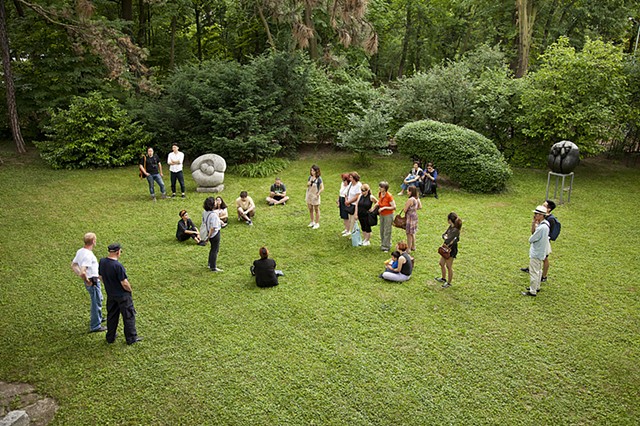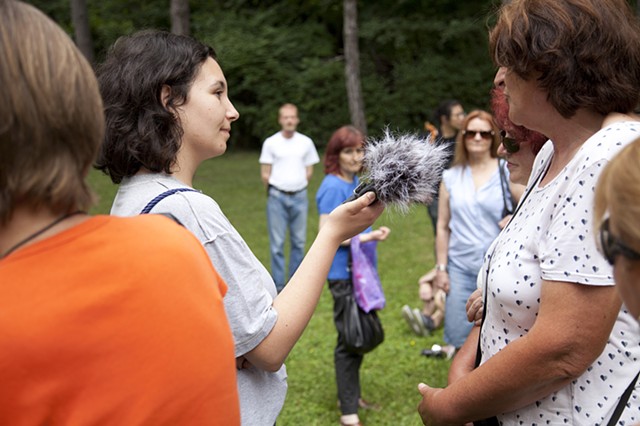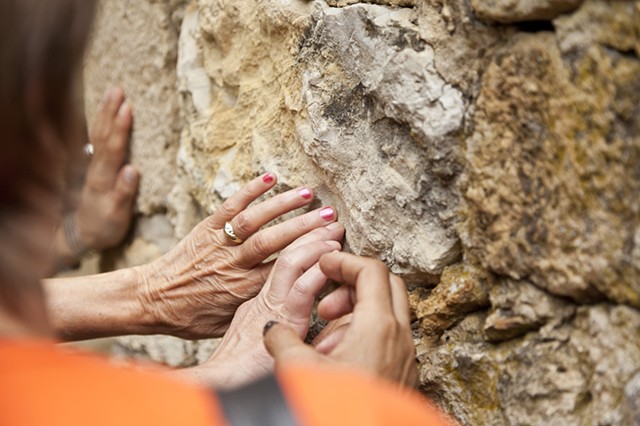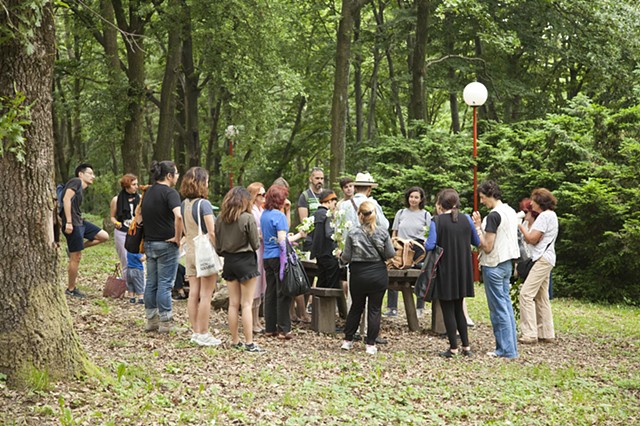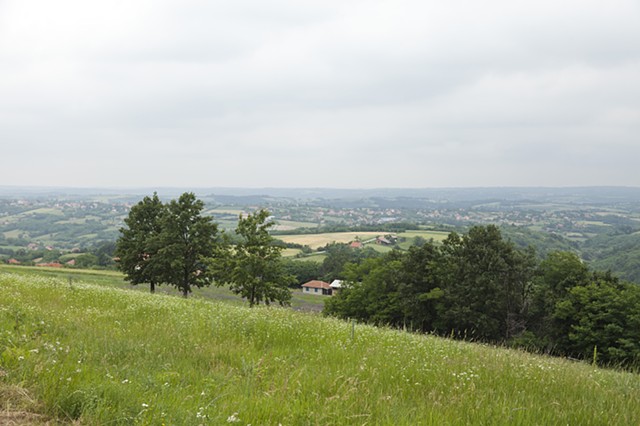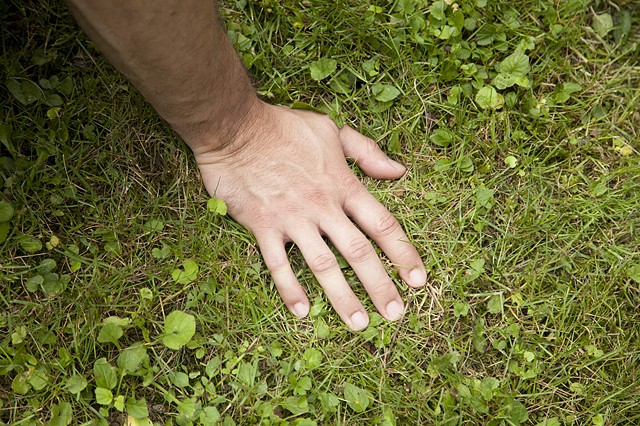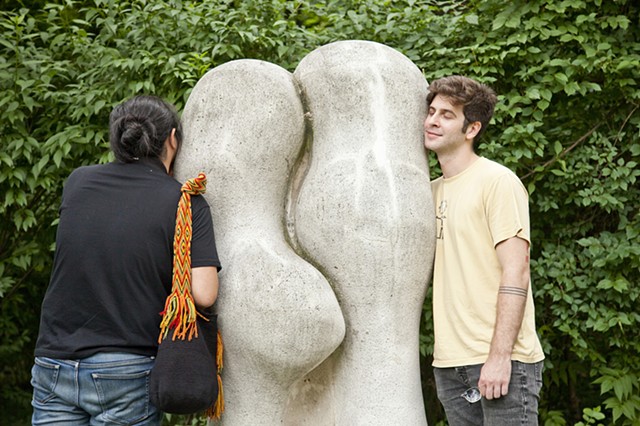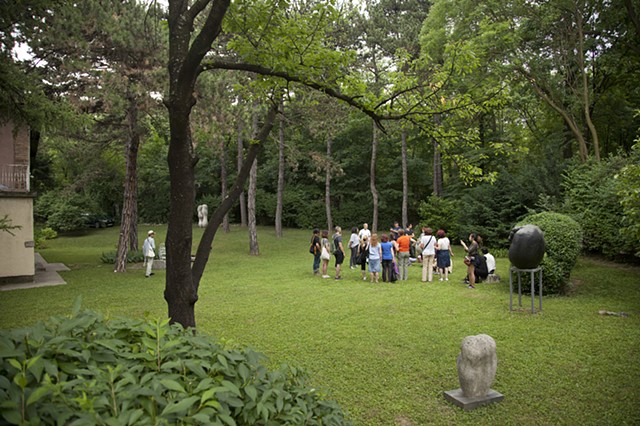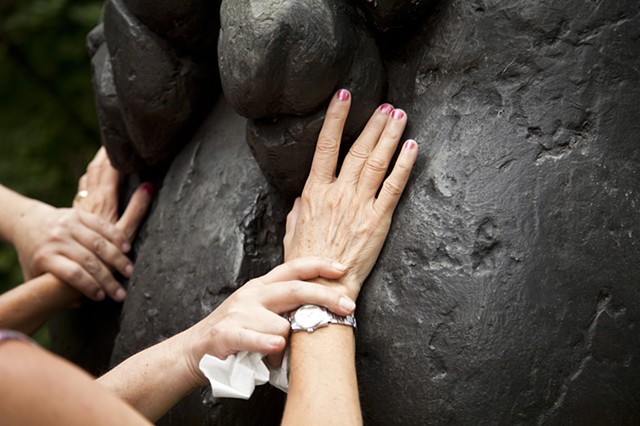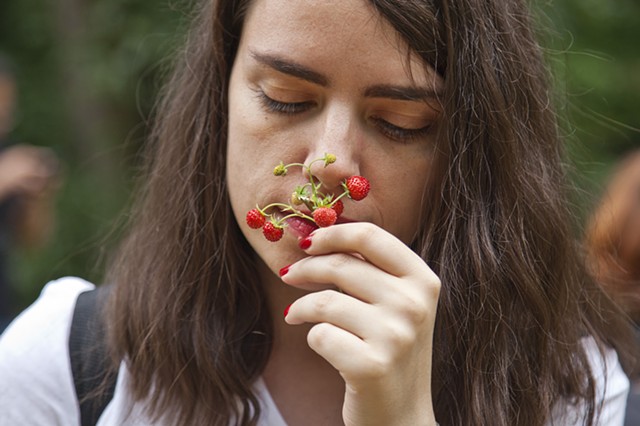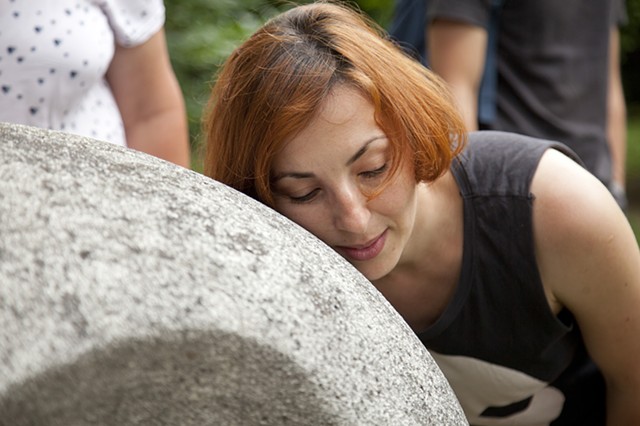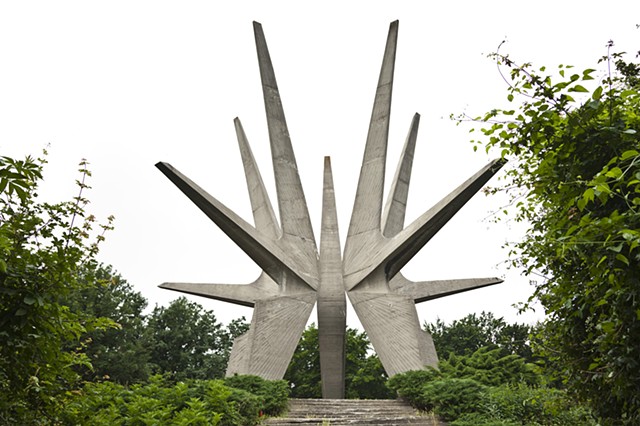Museum Incognita: Belgrade
The Museum Incognita, a collaborative project of Katie West and Fayen d'Evie, revisits neglected, concealed, or obscured histories, activates embodied readings, and archives ephemeral artworks and practices. Founded on a custodial ethic, the infrastructure enfolds performative encounters and a nomadic sculptural architecture, with gathering vessels, botanical furnishings, auditory texts, and tactile mnemonics for oral storytelling.
Meditations on listening, carrying story, custodial care, botanicals, and neglected histories, through embodied encounters with artworks in three landscapes: the Museum of Contemporary Art sculpture garden (under reconstruction); a private garden of sculptures by Olga Jancic; and a brutalist monument designed by Vojin Stojic; with architect Gradimir Medakovic, at the summit of Kosmaj mountain.
When the other meets the other, curated by Biljana Ciric, 27 May - 4 Jun 2017, Cultural Centre of Belgrade, Serbia
Kastaljan Monastery
The bus was that bit too large for the narrow country roads, which made turning around to find another way quite difficult. Dajan our guide was sure the monument was nearby. We assumed that he had visited this place before, but this was not the case. After stopping a few times to ask locals for directions, the bus began to climb a stony path up a steep hill. We wondered if the old bus would make it. We decide to stop halfway up and let everyone walk the rest of the way. We are still slightly sceptical about the existence of these ruins.
We’re soon distracted from this doubt when we take in the view of healthy green fields that from our high vantage point stretch for miles. Wildflowers and tall trees begin to line our path. I recognise species that also grow in Australia. In small groups, we stop to pick bright red sour cherries, negotiating how to get past stinging nettles to reach them. The path keeps on going, and soon we find the monastery, as Dajan promised.
We first notice the church and see that this is still a place of worship. Even though the roof is gone and the remaining walls are overgrown sit amongst the stones and foliage are offerings of flowers and alcohol.
Next to the church and sitting a little lower down the hill is what must have been the dining hall. The walls of this building are mostly intact. Windows frame the forest outside as they did for the monks who lived there.
We find another room where gothic style windows are still in place. People pause at this sight, arms gently crossed, satisfied smiles of awe. People take their bodies closer, to touch and take in with their fingers the texture and angled cuts in the stone.
There seems to be quite a congregation in this room now. Someone arrives with wild strawberries to show everyone. The smell is so strong and sweet. As I go to leave I notice in the wall the patterns and imprints of seashells. From a medieval age, we go to an Earth that is mostly ocean. A monastery built from an ancient seabed.
We did not create an audio description of this site.
Museum Incognita: Belgrade, Images: Boris Buric
